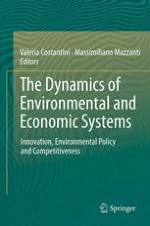
2013 | OriginalPaper | Chapter
1. The GTAP-E: Model Description and Improvements
Authors : Alessandro Antimiani, Valeria Costantini, Chiara Martini, Alessandro Palma, Maria Cristina Tommasino
Published in: The Dynamics of Environmental and Economic Systems
Publisher: Springer Netherlands
Activate our intelligent search to find suitable subject content or patents.
Select sections of text to find matching patents with Artificial Intelligence. powered by
Select sections of text to find additional relevant content using AI-assisted search. powered by